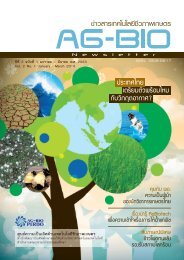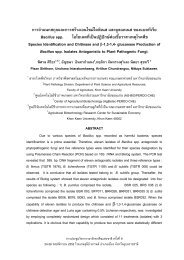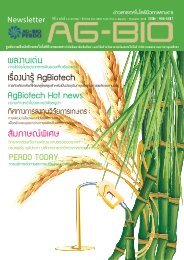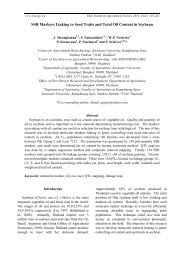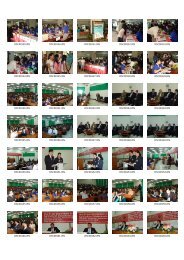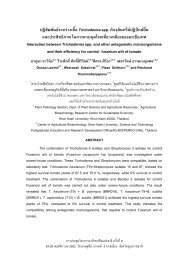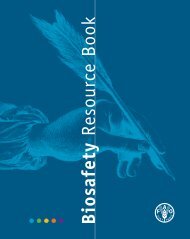Biosafety Manual PDF - Lawrence Berkeley National Laboratory
Biosafety Manual PDF - Lawrence Berkeley National Laboratory
Biosafety Manual PDF - Lawrence Berkeley National Laboratory
Create successful ePaper yourself
Turn your PDF publications into a flip-book with our unique Google optimized e-Paper software.
<strong>Biosafety</strong> <strong>Manual</strong><br />
IBC-approved version (May 18, 2010)<br />
5.2 Training, Instruction, and Qualification<br />
This section describes the requirements and administrative systems for institutional and<br />
operation-specific training, information, and instruction based on the biosafety-related standards<br />
and LBNL policies summarized in PUB-3000, Section 26.7.8.1.<br />
Work leads, supervisors, and principal investigators are responsible for ensuring their workers<br />
have sufficient skills, knowledge, and ability to perform their work safely. This includes<br />
understanding of the work, hazards, and controls through technical competence, training,<br />
instruction, and a commitment to safety in Integrated Safety Management (ISM) terms. Each<br />
worker’s competence must be commensurate with his or her responsibilities. This competence<br />
is a major component of biosafety containment and includes both required LBNL courses and<br />
sufficient operation-specific information and instruction. These courses, information, and<br />
instruction provide workers with awareness of the potential hazards, required training, and<br />
proficiency in the practices and techniques required for handling biological materials safely and<br />
in accordance with laboratory standard microbiological practices and special practices<br />
discussed in Section 4.1.<br />
Work leads must provide or arrange for appropriate training and instruction for each person,<br />
including but not limited to the:<br />
• completion of required LBNL courses specified on all work authorization documents, and<br />
• job- and operation-specific instruction and information.<br />
5.2.1 Job Hazards Analysis<br />
Supervisors, work leads, and staff must use the JHA or Subcontractor Job Hazards Analysis<br />
(SJHA) to define work with biological materials, determine the potential for exposure to<br />
biological hazards, and establish biosafety controls for each worker or subcontractor (for more<br />
information, see PUB-3000, Chapter 32 and Chapter 31, respectively). The <strong>Laboratory</strong>-wide<br />
JHA identifies workers who work with or have potential exposure to biological materials (e.g.,<br />
BBP materials). The JHA process is based on each individual’s work and activities. It also lists<br />
general controls including any required EH&S courses and <strong>Biosafety</strong> Work Authorizations for<br />
work or activities in which the worker participates.<br />
5.2.2 Training Courses and Tracking<br />
Specific biosafety, biohazardous waste, and occupational health courses are developed and<br />
maintained by the EH&S Division to meet requirements that can be fulfilled at an institutional<br />
level. LBNL course requirements are presented below and summarized in Table 10. See the<br />
EH&S Training Web site for additional course information, to register for a course, or to take an<br />
online course.<br />
• Anyone who works with biological material of any risk level (e.g., microorganisms, cells,<br />
cell lines, tissue cultures, recombinant nucleic acids, blood, body fluids or tissues, or<br />
animals) must complete EHS0739 (General <strong>Biosafety</strong> Training) online or in a classroom.<br />
In addition, the online course EHS0730 (Medical/Biohazardous Waste Training) is<br />
recommended for anyone who works with biological material, and required for anyone<br />
who works with medical or biohazardous waste.<br />
• Anyone who works with or may be exposed to human blood or blood products or to<br />
human materials (e.g., cells, tissues, or fluids) defined by the OSHA Bloodborne<br />
Printed copies are not official versions of this manual. Before using the printed copy, verify that it is the most current version.<br />
40



